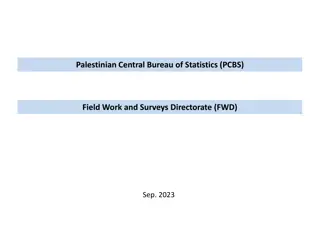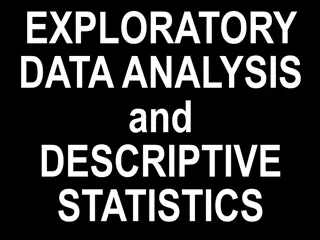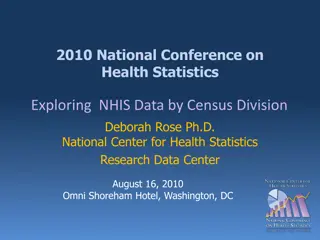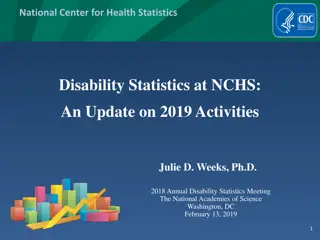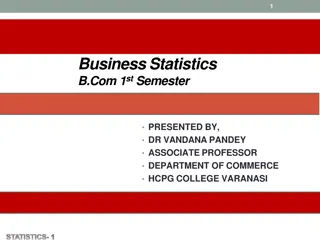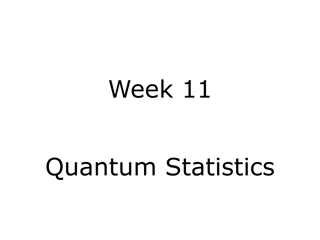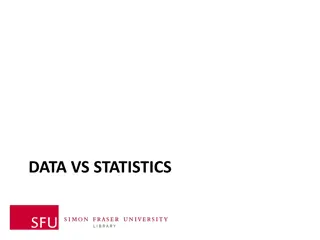Data Collection and Analysis in Statistics
In this study of data collection and analysis in statistics, we delve into concepts such as explanatory vs. response variables, scatterplots, and the strength of relationships between variables. Through warm-up exercises, tests, and project updates, students practice applying statistical methods. The chapter covers univariate and bivariate data analysis, including correlation coefficients and regression lines. Understanding the difference between explanatory and response variables is crucial in interpreting statistical results. Examples and exercises help reinforce these concepts.
Download Presentation

Please find below an Image/Link to download the presentation.
The content on the website is provided AS IS for your information and personal use only. It may not be sold, licensed, or shared on other websites without obtaining consent from the author.If you encounter any issues during the download, it is possible that the publisher has removed the file from their server.
You are allowed to download the files provided on this website for personal or commercial use, subject to the condition that they are used lawfully. All files are the property of their respective owners.
The content on the website is provided AS IS for your information and personal use only. It may not be sold, licensed, or shared on other websites without obtaining consent from the author.
E N D
Presentation Transcript
Chapter 12: Experimental Design Scientific Inquiry in Social Work
When you think of the term experiment, what comes to mind? The content of this chapter will increase your existing competency about using experiments to learn about the social world. Chapter Overview Experimental design: What is it and when should it be used? Pre-experimental and quasi-experimental design The logic of experimental design Analyzing quantitative data
Classic experimental design Experimental and control groups Random assignment Pretest and posttest Basic experimental design Variations Posttest only Testing effects Solomon four group design Using a comparison group
Nonequivalent comparison group design True experiment, without random assignment Natural experiments Ex post facto control group Time series Quasi- experimental design Matching Individual Aggregate
Static group comparison One-shot case study One-group, pre/posttest Pre- experimental design NOTE: Severe limitations in these types. Best for personal practice knowledge working with a client to see if an intervention is helping them.
Internal vs. external validity Replication can someone else follow your methods and repeat the study? Logic of experimental design Threats to validity Noncomparable groups Selection bias Placebo effect Researcher effects
Response rates and nonresponse bias Importance of creating a codebook to remember what the variables mean Univariate analysis Measures of central tendency Frequencies Quantitative data analysis Bivariate analysis Chi-square, t-test, ANOVA, and correlation Multivariate analysis Regression, MANOVA



